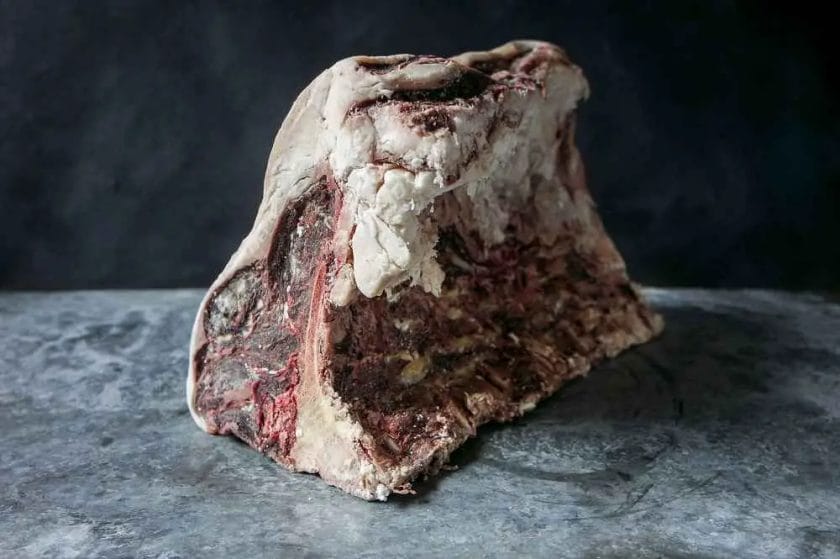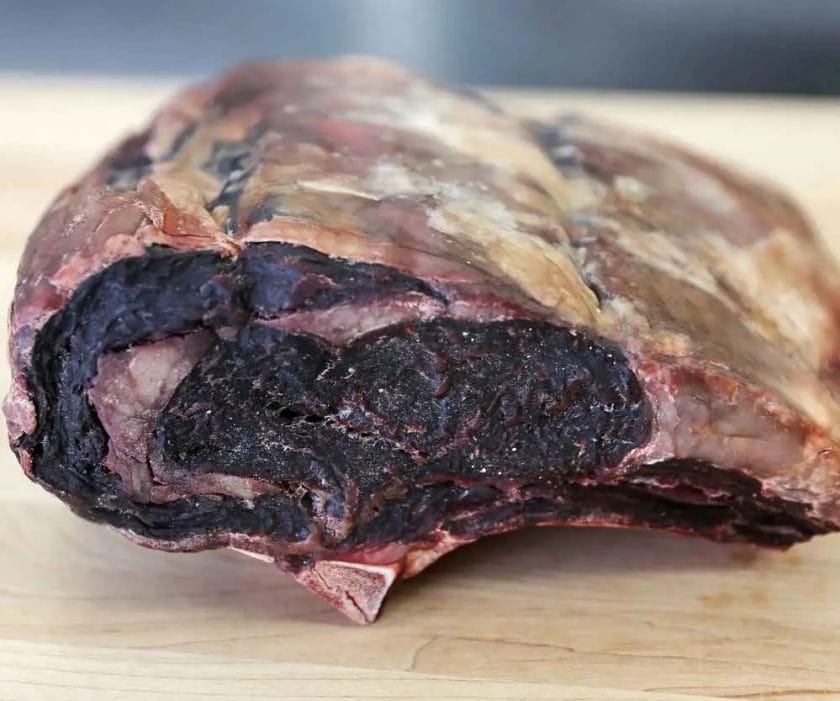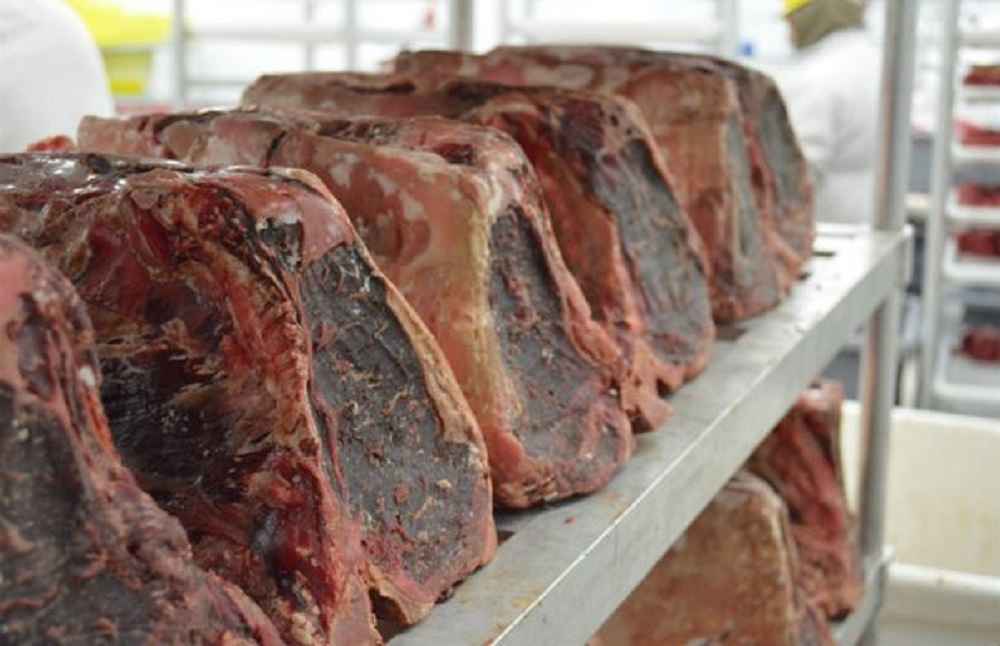Aging steak is a process that involves storing meat for a period of time to enhance its flavor, texture, and tenderness. The process is an important step in preparing the perfect steak and can make a big difference in the taste and quality of the final product.
Aging a steak properly is important to retard the growth of pathogenic bacteria but not everybody knows how to age a steak without it going bad.
In this article, we will provide you with a detailed and comprehensive guide to age your steak without it going bad so that you can enjoy the full benefits of this delicious and flavorful dish.
Understanding the Science of Aging Steak
Aging steak is a complex process that involves several scientific factors that determine the final outcome. To understand how to age a steak properly, it is important to understand the two main methods of aging steak: dry aging and wet aging.
Dry Aging
Dry aging is the traditional method of aging steak and involves exposing the steak to air in a controlled environment for a period of time. This process allows the steak to dry out slightly, which concentrates its flavors and tenderizes the meat.
The dry aging process also creates a natural rind on the steak, which helps to protect it from spoilage and contamination.
Wet Aging
Wet aging is a newer method of aging steak and involves storing the steak in a vacuum-sealed bag. This process allows the steak to marinate in its own juices, which helps to enhance its flavor and tenderness.
Wet aging is a more controlled process than dry aging and is often used for steaks that are sold pre-packaged.
Factors Affecting the Aging Process
There are several factors that can affect the outcome of the aging process, including the type of steak, the temperature and humidity of the aging environment, and the length of time the steak is aged.
It is important to carefully monitor these factors to ensure that the steak ages properly and does not spoil.
Preparing the Steak for Aging
Before aging the steak, it is important to choose the right cut of meat and to properly trim it. The cut of steak should have the right amount of fat to ensure that it does not dry out during the aging process.
The steak should also be seasoned before aging, to enhance its flavor and help to protect it from spoilage. Finally, the steak should be properly packaged to protect it during the aging process.
Dry Aging the Steak
Dry aging requires a controlled environment with the proper temperature and humidity to ensure that the steak ages properly. Here is what you need to know to dry age steak successfully:
Preparing the Controlled Environment:
To dry-age your steak, you will need a dedicated refrigerator or aging chamber. The temperature should be between 33-36°F (0.5-2°C) and the humidity should be between 50-80%.
A fan or ventilation system can help to circulate the air and maintain a consistent temperature and humidity.
Temperature and Humidity Control:
Temperature and humidity are critical factors in the dry aging process. If the temperature is too high or the humidity is too low, the steak can spoil.
If the temperature is too low or the humidity is too high, the steak will not age properly. It is important to monitor the temperature and humidity regularly to ensure that they are within the proper range.
Length of Time for Dry Aging:
The length of time that the steak is aged will depend on the type of steak and the desired outcome. Generally, steaks can be aged for anywhere from 7 to 28 days.
Monitoring the Progress of Aging:
It is important to monitor the progress of the aging process to ensure that the steak is aging properly and to prevent spoilage.
The steak should be inspected regularly for any signs of spoilage or contamination, and the temperature and humidity should be checked regularly to ensure that they are within the proper range.
Proper Storage of Dry Aged Steak:
Once the steak has been dry aged for the desired length of time, it should be properly stored to prevent spoilage. The steak should be wrapped in butcher paper or plastic wrap and stored in a refrigerator at the proper temperature and humidity.
Wet Aging the Steak
Wet aging is a more controlled method of aging steak and is often used for steaks that are sold pre-packaged. Here is what you need to know to wet age steak successfully:
Preparing the Wet Aging Environment:
Wet aging steak requires a controlled environment with proper temperature control. A refrigerator or aging chamber with a consistent temperature of 34-36°F (1-2°C) is ideal for wet aging steak.
Temperature Control:
Temperature control is critical in the wet aging process to prevent spoilage. The steak should be stored at a consistent temperature of 34-36°F (1-2°C) to ensure that it ages properly.
Length of Time for Wet Aging:
The length of time that the steak is aged will depend on the type of steak and the desired outcome. Generally, steaks can be wet aged for anywhere from 7 to 14 days.
Monitoring the Progress of Aging:
It is important to monitor the progress of the aging process to ensure that the steak is aging properly and to prevent spoilage.
The steak should be inspected regularly for any signs of spoilage or contamination, and the temperature should be checked regularly to ensure that it is within the proper range.

Proper Storage of Wet Aged Steak:
Once the steak has been wet aged for the desired length of time, it should be properly stored to prevent spoilage. The steak should be vacuum-sealed and stored in a refrigerator at the proper temperature.
Safety Precautions and Tips for Aging Steak
Aging steak requires careful monitoring and attention to detail to ensure that the steak ages properly and does not spoil. Here are some safety precautions and tips to follow when aging steak:
Sanitation and Hygiene:
Sanitation and hygiene are critical in the aging process to prevent spoilage and contamination.
Hands should be washed thoroughly before handling the steak and all surfaces and equipment used in the aging process should be cleaned and sanitized regularly.
Handling Raw Meat:
Raw meat can carry harmful bacteria, so it is important to handle it properly to prevent cross-contamination. Always use separate utensils, cutting boards, and containers for raw meat and cook it to the proper temperature to kill any harmful bacteria.
Monitoring for Spoilage:
It is important to monitor the steak regularly for any signs of spoilage or contamination. The steak should be inspected for any changes in color, texture, or odor and should be discarded if there is any indication of spoilage.
Proper Storage and Wrapping:
Proper storage and wrapping are crucial in the aging process to prevent spoilage and ensure that the steak ages properly.
The steak should be stored at the proper temperature and humidity and wrapped in either butcher paper or vacuum-sealed to prevent spoilage.

Conclusion
Aging steak can result in a more tender, flavorful steak, but it requires careful monitoring and attention to detail to ensure that the steak ages properly and does not spoil.
By following the steps outlined in this article, you can successfully age steak and enjoy a delicious, juicy steak at home.
What is the difference between dry aging and wet aging?
Dry aging involves exposing the steak to the air in a controlled environment with proper temperature and humidity, while wet aging involves vacuum-sealing the steak and aging it in a controlled environment with proper temperature control.
Dry aging results in a more intense flavor and tender texture, while wet aging is a more controlled and consistent method of aging steak.
What type of steak is best for aging?
Typically, steaks with more marbling and fat content are better suited for aging, such as ribeye, sirloin, and strip steaks. These steaks will benefit from the aging process and develop a more intense flavor and tender texture.
How long should I age steak for the best result?
The length of time that steak should be aged will depend on the type of steak and the desired outcome. Generally, steaks can be aged for anywhere from 7 to 28 days for dry aging and 7 to 14 days for wet aging.
It is important to monitor the aging process regularly to ensure that the steak is aging properly and to prevent spoilage.
Can I age steak at home?
Yes, you can age steak at home with the proper equipment and conditions. You will need a dedicated refrigerator or aging chamber with the proper temperature and humidity control.
It is also important to follow proper hygiene and safety precautions when handling raw meat to prevent contamination.
Is it safe to eat aged steak?
Yes, it is safe to eat aged steak as long as it is stored and handled properly to prevent spoilage and contamination. The steak should be stored at the proper temperature and humidity and should be inspected regularly for any signs of spoilage or contamination.
If there are any indications of spoilage, the steak should be discarded.

